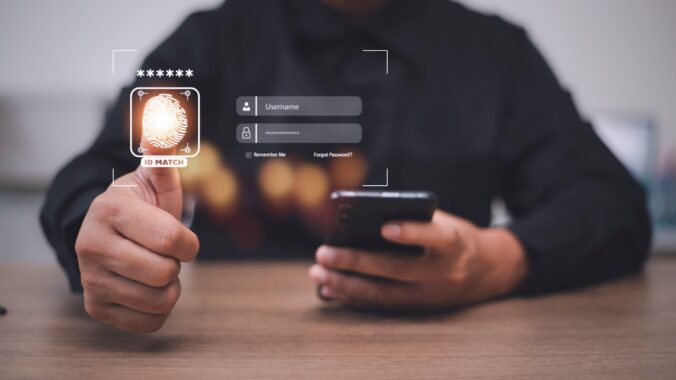Do you recall what air travel was like from just a few months ago? We were practically able to fly anywhere, without having to think about whether our health was at risk, whether we’d be allowed in the country upon arrival, or if we’d need to self-isolate for 14 days as a precaution. The COVID-19 crisis has dramatically disrupted the aviation industry, grounding thousands of planes for months and emptying airports.
Besides the negative economic impact it has had on the industry, the pandemic has considerably shaken the trust between customers and airports, and passengers and airlines. Therefore, in order to encourage individuals to travel again, airport operators and airlines can use innovative technology such as automation, machine learning and biometrics to make safety, hygiene and health their top priority.
Let’s follow the journey of a passenger, Jenny, who regularly flies to different destinations around the world, to see how new technology at airports can keep her safe, while still allowing her to have a seamless and enjoyable passenger experience.
Machine learning can make social distancing a reality
Airports are by nature crowded spaces where procedures are built around people queuing and being in close contact with one another. Many countries have relaxed their social distancing measures from two to one metre, but even so this could still cause disruptions to the airport experience.
Machine learning (ML) algorithms integrated through the airport system can regulate the flow of passengers to avoid over occupancy and long queues at checkpoints, ensuring reasonable time for perusing shops, making use of amenities and maintaining social distancing at boarding. The flow of passengers is regulated by only allowing access to the sterile area of a specified flight according to departure time, the number of flights expected, the forecasted number of passengers and the number of boarding passengers.
Here’s how this would work. The day before her flight Jenny receives a notification though her mobile phone app with a recommended time to arrive at the airport to avoid queues at the self-check-in desk. If her flight has a green light, she will be able to enter the queue for the security checkpoint and go into the sterilized area. Whether her flight has a green or red light is decided by the ML algorithm based on the departure time and passenger occupancy rate. The boarding pass reader will not allow Jenny to enter the queue for the security checkpoint if her flight has a red light.
Health check operations enabled by thermal cameras
The role of the airport as a gateway to the country and to provide health checks is expected to last for quite some time. The requirement to identify symptoms and manage infection, and to increase passenger and staff trust as a result, is likely to remain until a vaccine is found. So how are airport operators going to deploy these operations?
In a recent IATA survey of travellers, 80% indicated that temperature checks make them feel safer when travelling. Temperature checks are likely to remain for a long time and airport operators need to incorporate this measure into their normal practices in a way that it doesn’t disrupt the passenger experience.
Thermal cameras at the airport will monitor whether Jenny and all other passengers and staff are wearing face coverings. These cameras will measure Jenny’s temperature through various touchpoints at the airport, including entrance, departure and arrival. If the camera detects that Jenny has a temperature of 37.8C or greater, she will not be able to proceed with her journey and will need to safely go back home to self-isolate.
Using sensors to ensure smooth passenger experience
Monitoring for people’s behaviour is not just essential for their health and safety but also to ensure an enjoyable passenger experience, which is likely to drastically change because of the social distancing and health and safety measures taken. A video management system will also detect any unusual behaviour and will be able to alarm security officers so that they intervene quickly and restore safety conditions.
If airports deploy sensors that can anonymously track passenger behaviour, this will help operators predict crowded areas, anticipate need for retail and real estate marketing and correctly allocate resources. By tracking her throughout the airport, the operator could send a message to Jenny through digital signage or public announcements to advise her the best time to go to the duty free area in order to avoid crowds.
Improving border crossing safety and wait times with eGates
Automated border control (ABC) gates address the challenge of minimising and simplifying immigration procedures at airports while improving ease, speed and convenience for travellers. eGates automate the ID verification processes through facial recognition tech that allows for seamless, less intrusive and faster experience. The pandemic has placed an increased importance on hands-free interactions to help reduce the rate of infection; therefore, instead of queuing at the immigration desk where a border control officer would need to manually verify her ID documents, Jenny can simply go through the eGates to avoid this.
Here’s how the technology works. Thanks to its multi-camera wall, the gate begins processing biometrics as soon as Jenny steps in. Digital mirrors are placed next to the cameras, instinctively attracting her eyes in the correct direction for successful image capture. This positioning allows Jenny to pass through the gate intuitively, minimising the risk of human error and associated time loss. State-of-the-art biometric verification software with live quality assurance checks ensures that Jenny is the rightful owner of the ID document.
Air travellers rely on clear guidance and this is especially true during times of crisis. The upturn of passengers will only be possible if they can trust that airports can guarantee the safety of everyone on their premises, while ensuring a smooth, undisrupted experience. In order to be implemented effectively, these new procedures, regulations and social-distancing measures need to be supported by first-class technological solutions.
For more information around how technology will enable the new airport experience after the COVID-19 pandemic, download our whitepaper on the topic, listen to the on-demand webinar Addressing COVID-19 challenges at airports to restore passenger trust or tweet us at @ThalesDigiSec.



